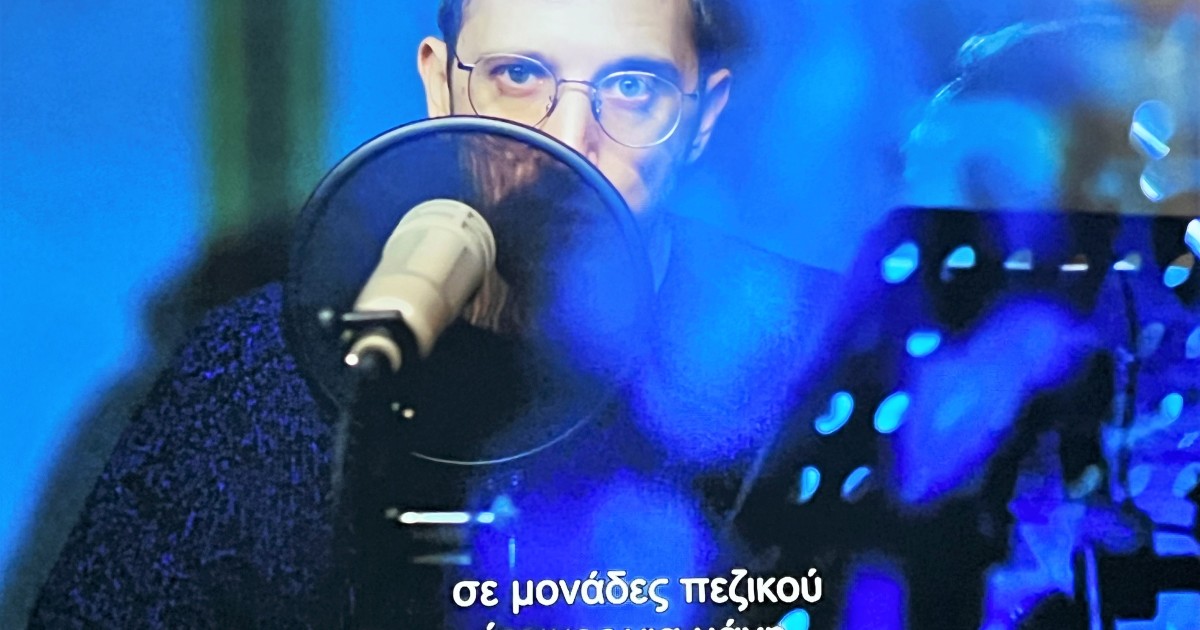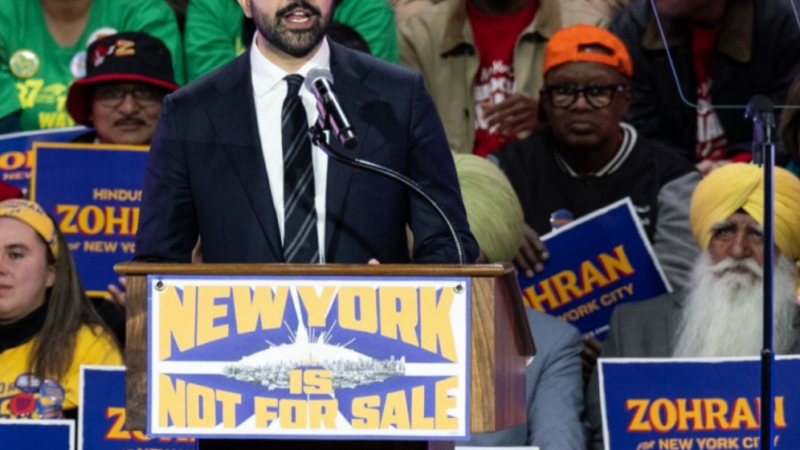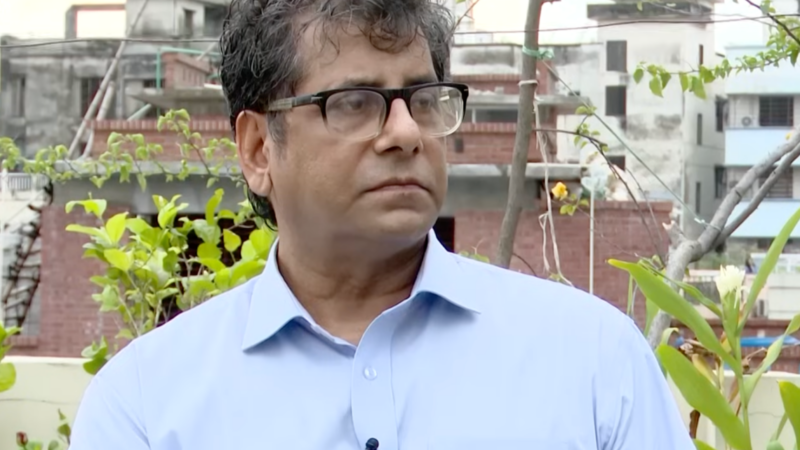‘Sonic Detective’: The artist using sound to expose crimes

The National Museum of Contemporary Art in Athens holds a retrospective of key audio-visual pieces by sound artist Lawrence Abu Hamdan, whose work bridges art and politics.
Athens, Greece – Beirut-based sound artist Lawrence Abu Hamdan has become known as the “Private Ear”, as his research-based, investigatory work has been used to investigate killings and expose other human rights abuses.
Sonic Detective, a retrospective of two key audio-visual works by the 37-year-old Jordanian-born artist, is now on show at the newly-revamped National Museum of Contemporary Art (EMST) in Athens – which reopened its doors on June 16 with a packed exhibition programme after a long delay due to the coronavirus pandemic.
By using sound as a tool to bridge art and politics – through techniques such as sound analysis, interactive sound maps, and oral testimonies – Abu Hamdan hopes to reach a wider audience and stimulate conversations on underreported topics in the Middle East and North Africa (MENA) region.
“[These projects] begin with that desire to take the political engagement a step further,” Abu Hamdan told Al Jazeera.
He said art provides the flexibility to cover political issues in a broader and more experimental way that is not tied to the strictures of journalistic news cycles and modes of storytelling.
“The power of art is that artists usually are the people who observe things about the world that are taken for granted, and I think there’s something politically meaningful about that,” he said.
‘Story about silence and suppression’
Raised between Jordan and the United Kingdom, Abu Hamdan’s background in making music led to a broader interest in sound and how an audience reacts and connects to it.
He went on to study sound art and developed his trademark research-based approach. In 2017, he completed a PhD at Goldsmiths College University of London that saw him work with the research group Forensic Architecture on a project that examined the use of voice analysis in the legal system.
EMST’s retrospectives feature Abu Hamdan’s works Rubber Coated Steel (2016) and Walled Unwalled (2018) – which were part of the project that won him the 2019 Turner Prize, the UK’s most prestigious art award.
Set in a firing range, the 22-minute film Rubber Coated Steel tells a fictional story of a real Israeli military tribunal about killings in 2014, when unarmed Palestinian teenagers Nadeem Nawara and Mohammad Abu Daher were shot dead by Israeli forces.
The film came out of a report that Abu Hamdan worked on with Forensic Architecture that used acoustic analyses to produce visualisations of sound frequencies that proved the Israeli forces had fired live rounds, and not rubber bullets as they had claimed.
An Israeli soldier, Ben Deri, was subsequently sentenced to nine months in prison for negligent manslaughter, a term that the Supreme Court later doubled after the prosecution agreed to a plea deal – despite overwhelming evidence suggesting that he had intentionally killed Nawara.
The film is eerily quiet, only punctuated by the clanking of targets moving around the firing range, showing subtitles based on a transcript from the case made public by the human rights organisation Defence for Children International and the images of spectrograms that depict the sounds of projectiles such as rubber bullets and live ammunition.
“The film is a kind of reflection on all that I went through during the investigation,” Abu Hamdan said. “I’m using the story and a series of cinematic strategies to tell a story about silence and suppression – both the suppression of voices and the suppression of bullets – about the role that it plays in determining who has the right to speak, which voices are legitimate and which are not”.
He said the actual sounds of the gunshots do not appear in the film, as a form of silent protest and comment on the suppression of Palestinian voices, especially in the judicial system.
“The youth who are protesting regularly can tell very quickly the sound of different kinds of ammunition, based on experience – those are the real sound experts and yet they’re not invited to the table as witnesses,” he said.
Walled Unwalled
Meanwhile, the video installation Walled Unwalled – created as part of an advocacy campaign for Amnesty International and including monologues, images, and different sounds – features interviews conducted by Abu Hamdan with three former detainees of the Syrian military prison Saydnaya.
Narrated by Abu Hamdan and recorded at Funkhaus, a Cold War-era recording studio in former East Berlin, the video also includes sounds used as evidence in famous court cases, such as the trial of Oscar Pistorius for the murder of Reeva Steenkamp.
“I was part of a team of investigators hired by Amnesty, which exposed the incidents at the prison,” Abu Hamdan said. “I was the one focusing on sound because the people I was interviewing had been blindfolded when the guards came in and almost never left their cells. They didn’t see anything, but they heard a lot of things.”
Detainees recalled hearing and feeling the sound of beatings reverberating through the walls, even though the abuse took place two floors up from the prison cells.
Abu Hamdan’s investigation found that the specific architecture of the prison enabled sound to travel down a central tunnel and create a distorted, haunting noise that could be sensed throughout the structure, symbolised by an ominous intermittent percussion running through the video.
Arab Museum of Modern Art director Zeina Arida believes Abu Hamdan’s approach to using sound as a political and artistic instrument makes his work distinct.
“His approach is very different and creative in the way he conveys his investigations, while at the same time, his installations are a very poetic tool, which is not always easy to combine,” Arida said. “I thought this kind of collaboration [with Amnesty] was quite unique, that he was able to partner with such an organisation, but still create work able to be diffused in the art world.
“[The] stories or people he works with are very political, in the sense that we’re all concerned by these topics,” she added. “The scope of his projects is always wider than just the individual story he’s telling.”
‘Organic development’
Sonic Detective is part of several new shows running until October at EMST, which has now officially moved into a completely renovated former FIX Brewery building after years of delays and boasts three floors of permanent collection space and five temporary exhibition rooms.
The museum has decided to shift to a longer-term focus on artists from the MENA, Turkey, and the Balkans.
“It’s an organic development – we have the good fortune of being neighbours with these regions and also having a Mediterranean identity,” EMST director Katerina Gregos told Al Jazeera. “This part of the world is culturally, politically and religiously one of the richest and also the most contested, and these histories have not been properly dealt with.”
Gregos said that Greece’s post-second world war identity has always been Westward-looking, and has neglected its southeastern neighbours.
“[The museum’s shift in focus] is a kind of correctional historiography, but it also makes sense to look at where we are situated.”
Meanwhile, Abu Hamdan is working on new ventures that continue to use sound to expose injustice in the region.
Earlier in June, he launched an online platform called Airpressure.info that gathers data on violations of Lebanese airspace by Israeli aircraft over the last 15 years. Interactive maps and databases of sounds and videos from a range of sources aim to give a sense of the psychological effect caused by the roar of fighter jets and the buzz of drones overhead.
“This project is quite a good example of how I work, because the strategy is for one large research project to exist across a series of forums and platforms – be they the law court, advocacy, media or art biennials and art exhibitions,” Abu Hamdan said.
“It’s about trying to put something out in the world that would hopefully reformat a little bit the way we talk about things.”
Sonic Detectives is at EMST, Athens, until October 30, 2022.






